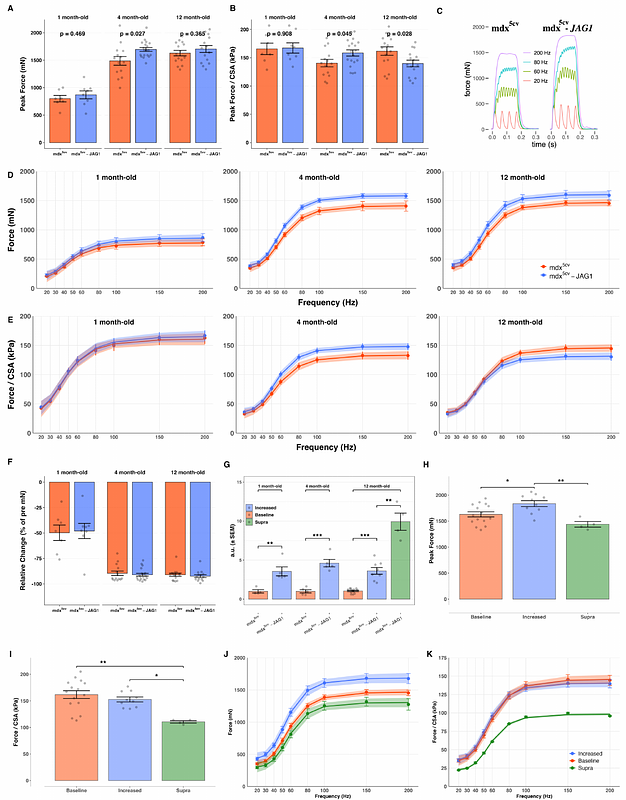Muscle-specific increased expression of JAG1 improves skeletal muscle phenotype in dystrophin-deficient mice.

Muscle-specific increased expression of JAG1 improves skeletal muscle phenotype in dystrophin-deficient mice.
de Souza Leite, F.; Lambert, M. R.; Zhang, T. Y.; Conner, J. R.; Paulo, J. A.; Oliveira, S. F.; Thakurta, S.; Bowles, J.; Gussoni, E.; Gygi, S. P.; Widrick, J. J.; Kunkel, L. M.
AbstractTherapeutic strategies for Duchenne Muscular Dystrophy (DMD) will likely require complementary approaches. One possibility is to explore genetic modifiers that improve muscle regeneration and function. The beneficial effects of the overexpression of Jagged-1 were described in escaper golden retriever muscular dystrophy (GRMD) dogs that had a near-normal life and validated in dystrophin-deficient zebrafish (1). To clarify the underlying biology of JAG1 overexpression in dystrophic muscles, we generated a transgenic mouse (mdx5cv-JAG1) model that lacks dystrophin and overexpresses human JAG1 in striated muscles. Skeletal muscles from mdx5cv-JAG1 and mdx5cv mice were studied at one, four, and twelve-month time points. JAG1 expression in mdx5cv-JAG1 increased by three to five times compared to mdx5cv. Consequently, mdx5cv-JAG1 muscles were significantly bigger and stronger than dystrophic controls, along with an increased number of myofibers. Proteomics data show increased dysferlin in mdx5cv-JAG1 muscles and an association of Nsd1 with the phenotype. Our data supports the positive effect of JAG1 overexpression in dystrophic muscles.